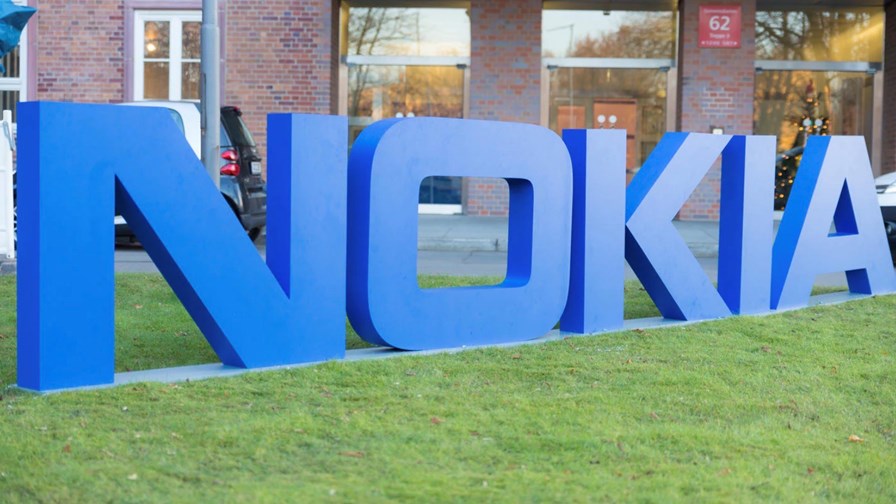
- Operator interest in fixed wireless access (FWA) is growing
- Using millimetre wave (mmWave) spectrum to deliver high bandwidth would be useful
- But economics of 5G mmWave for FWA have been very challenging
- Nokia has developed a new approach with special antenna tech and dynamic management analytics tools
With interest in fixed wireless access (FWA) deployments growing as operators look for ways to provide broadband coverage in areas that are uneconomic for fibre rollouts, Nokia has developed antenna technology and analytics tools that it believes can make 5G millimetre wave (mmWave) FWA rollouts effective and efficient from an economic as well as a service performance perspective.
There's plenty of evidence that operators around the world are investing a great deal more in fibre broadband access infrastructure, but that's not an economic option for blanket coverage of all potential customers. And with broadband connectivity now deemed an ever-more vital service as people increasingly work from home or in ad hoc locations, the ability offer a decent broadband connection to pretty much every home and office is a top priority for service providers, alternative access network options need to be identified and deployed (hence the recent increasing interest in satellite broadband, regarded by many as the option of last resort).
FWA has always been a niche option, but it's now attracting more focus, R&D dollars and interest. According to Nokia, the use of mmWave technology could boost the capacity of 5G-enabled FWA connections by up to 10x compared with the connectivity enabled by regular sub-6 GHz spectrum deployments. That's the plus side – but the network topologies used for mmWave deployments and challenges related to signal interference make it an unviable option, and those are the problems the Nokia team has been trying to unpick with its 360 High Gain proposition.
While deploying mmWave would add a lot of capacity to FWA networks, operators have had “doubts about the business case for mmWave,” notes Stefaan Vanhastel, CTO at the vendor’s Fixed Networks unit (part of the Network Infrastructure division).
“As an industry we've always talked about these ultra-dense, small cell networks, and those come at a high cost. You can do fibre-like speeds, but it definitely comes with fibre-like cost as well. So we started to look at how to make mmWave more viable” through smarter deployment planning and technology enhancements.
The efficient rollout pitch relies on an existing dense deployment of cell sites: Instead of the “small-cell-every-60-metres use case, we looked at a capacity overlay use case,” whereby mmWave small cells would be overlaid on an existing sub-6 GHz FWA deployment, which would already have cells installed quite close together in urban environments, probably every few hundred metres.
“The idea was that if mmWave radios were overlaid on that grid... you could cover the subscribers that are close enough [with mmWave signals] and free up your sub-6 GHz for the customers that are further away. This already changes the cost, because the operator is adding capacity to their existing locations.”
The technology pitch addresses a number of common challenges with mmWave.
Firstly, such deployments often suffer from a weak signal, “especially if the operator wants to deploy the CPE [customer premises equipment/home wireless router] indoors, which most operators want to do, for the customer experience and also to reduce the cost of the deployment and avoid truck rolls. So, if you have an indoor CPE, you'll get a fairly weak signal, because the mmWave signal has to penetrate walls or windows, so you get penetration loss. Also, you might not have line of sight, so you might have reflections outdoors, you might even have reflections inside the home if the CPE isn’t placed right inside a window, so there might be diffraction loss and propagation loss.”
And because of reflections from other buildings and indoors, the best signal could be coming from any angle at any time and could also be changing as the environment changes, for instance if a window was opened or (and I love this example from Vanhastel) “if your cat decides to sleep in front of the CPE.”
Dogs didn’t get a mention, by the way....
“So you need 360 degrees coverage to pick up the best signal, which might come from any direction and which might change constantly. We worked with a couple of operators to take a slightly different approach,” which is the secret sauce that Nokia isn’t sharing, “to build 5G CPE with very high gain [that] you need that with 360 degrees coverage, but also with fingerprinting printing intelligence, which scans the environment constantly to make a fingerprint of the radio environment [and] select the best possible signal. The combination of these gives you a consumer-proof device – they can put it almost anywhere and it will get a good signal.”
And with this development, the technology innovation is not in the enabling wireless chipsets but in “the antenna and the algorithms” that enable ongoing, dynamic management and configuration based on ‘advanced analytics” that identify the strongest and most reliable signals. “It’s 3GPP-compliant and work independently of the chipset... we have some IP [intellectual property] in the specific implementations,” adds the CTO.
Vanhastel says Nokia is currently working with a number of operators in Asia and Europe to “test and optimize the technology in the field” with a view to a commercial launch in the middle of 2022.
Of course there are other options out there vying for the operators’ FWA attention: IN fact, one of the emerging challengers in the FWA broadband technology sector is Tarana Wireless, which is now run by Basil Alwan, former long-time senior executive at Nokia. It’s a small world... (See Starry, Tarana shine a light on FWA’s potential.)
- Ray Le Maistre, Editorial Director, TelecomTV
Email Newsletters
Sign up to receive TelecomTV's top news and videos, plus exclusive subscriber-only content direct to your inbox.




